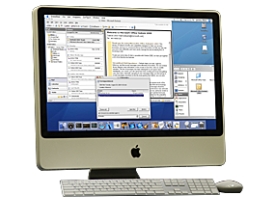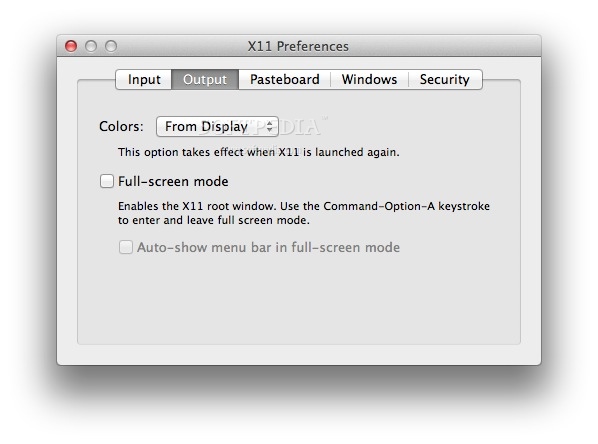


After doing so, you should be greeted by a full-screen XTerm. We are now ready to toggle full-screen mode with Command-Option-A.
Xquartz 2.7.2 update#
Open the XQuartz Preferences with Command-, and update the following settings: Now start XQuartz (it is installed in /Applications/Utilities).
Xquartz 2.7.2 install#
Runhaskell Setup.lhs install -user Configuring XQuartz for xmonadĬreate an ~/.xinitrc file containing: ] & xrdb -load ~/.Xresources Runhaskell Setup.lhs configure -user -prefix=$HOME Next, install xmonad’s dependencies using cabal, which is Haskell’s package manager: cabal updateįinally, download, build, and install xmonad as an application for use by the current user: mkdir ~/build-xmonad If they are still building, peruse the xmonad Guided Tour to get a taste for the functionality that you will soon be enjoying. Now is a good time to take a break, stretch your legs, and come back in a few minutes. Xmonad is implemented in Haskell, so the first step is installing the Haskell compiler and platform: brew update This ensures that XQuartz will be recognized as the default implementation of X. After installation, log out and log in again. Installation is simple: download the XQuartz-2.7.2 disk image, open it, and run the XQuartz.pkg installer. To get that functionality, you must install the latest version of XQuartz. X11.app, the implementation of the X Window System that ships with OS X Lion does not support full-screen usage. I assume that you already have Homebrew installed.

The following sections describe the steps I went through to get xmonad up and running in a full-screen X11 environment on OS X Lion. I’ve been using it as my primary development setup for the past week weeks and have been very happy with it. It takes some work, and the experience is not seamless–see issues to be aware of, below–but it is good enough to for serious work. Intrigued and excited to incorporate it into my daily work, I set out to get xmonad working full-screen on OS X Lion. Trying it on an Arch Linux VM gave me exactly what I was looking for: Emacs on the left and a variable number of XTerms stacked on the right. xmonad is to X what tmux is to a terminal. And, even with windmove-default-bindings, navigating around the three or four windows I was using to take advantage of the full-screen space was awkward.Ībout the time I was abandoning full-screen Emacs, I discovered xmonad through some tweets from and It is a tiling window manager for X Windows that can be controlled completely through the keyboard. Unfortunately, neither Eshell nor terminal-mode felt quite right for command line work. I’ve been experimenting with distraction-free development environments on OS X Lion.


 0 kommentar(er)
0 kommentar(er)
